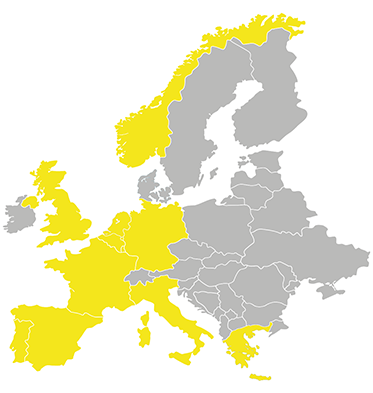Project title: Fully connected virtual and physical perovskite photovoltaics lab
Funding programme: Horizon 2020
Action type: Research & Innovation Action (RIA)
Duration: 01/06/2021 – 30/11/2024
Overview of the VIPERLAB project
Within only a few years of systematic research, the unprecedented rise of metal halide perovskites as a new class of photovoltaic absorber materials has considerably changed the photovoltaic roadmap surpassing the efficiencies of inorganic thin film technologies such as Si and CIGSe. Single junction Perovskite solar cells have reached a certified efficiency of 25.2% and perovskite/Si tandem cells have achieved efficiencies over 29% on small areas*. However, the technology does not yet fulfil the requirements for mass-production, especially in view of the three targets: manufacturability, sustainability and stability.
Perovskite PV hence have a huge potential to not only become a leading single junction PV technology for wide-spread solar energy conversion but also to boost existing PV technology by enabling efficient low-cost tandem solar cells. The mission of VIPERLAB is to facilitate faster and reliable technology evaluation cycles to enable a swift market entry for Perovskite-based PV products and hence a more wide-spread utilization of renewable energy conversion technology.
VIPERLAB aims to accelerate the perovskite PV development in Europe by fostering collaborations between academia and industry as well as facilitating and coordinating access to the best EU-based perovskite research infrastructures. It offers top-level material synthesis, state-of-the-art device design and development, as well as standardized testing methods, simulation methods, and databases as services for the European Perovskite R&D community. By doing so, the project enables technology validation from lab-scale to pre-industrial-scale, to reinstall/maintain a leading role of the European PV innovation environments along the value chain of PV technology development and deployment.
Project objectives
1) Access to expertise and infrastructure:
Uniting European top-ranked perovskite PV experts and research infrastructures, both physical and virtual, to enable faster perovskite solar cells and module development and testing on higher technology readiness levels. Facilitating access to perovskite-focused research infrastructures for EU-based material and PV research oriented academia and industry/SMEs.
2) Networking and Training Actions:
Connecting and supporting the European perovskite R&D community through physical and virtual infrastructure access, educational resources, fostering collaboration between academics and industry, and targeted networking activities.
3) Develop infrastructure and knowledge-base:
Further develop physical and virtual perovskite infrastructures, build an up-to-date database for materials and devices, long-term performance, environmental, and economic impact enabling evidence-based commercial and political decision making.
Our involvement in the VIPERLAB project
PNO supports WP5 to foster collaboration and good practice sharing and WP6 to bring its international consulting experience into the consortium, including extensive project and innovation management, exploitation and business planning expertise. A particular focus is placed on identifying and engaging with relevant stakeholders for further exploitation activities, as well as targeted dissemination activities.








